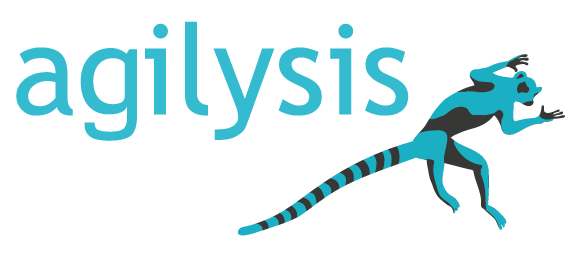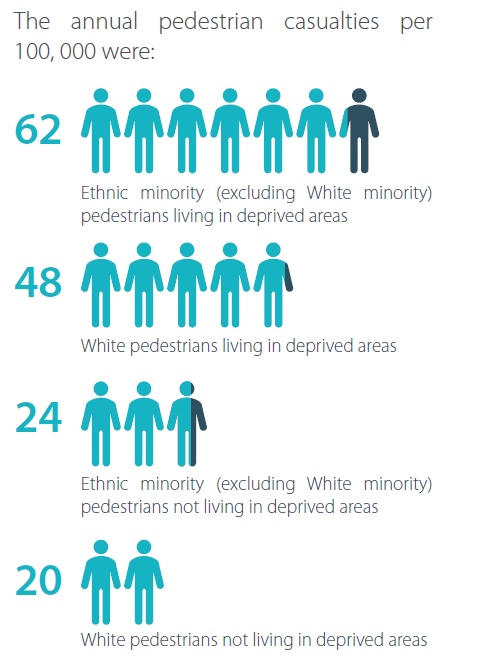ROAD TRAFFIC AND INJURY RISK IN ETHNIC MINORITY POPULATIONS
Understanding the evidence available to researchers, assessing risk, and proposals for future investigations
Over the last year Agilysis have been investigating how we can examine how road casualties different according to ethnic background. We have studied the available data and obtained permission from the Department for Transport to match postcode data to know ethnic backgrounds.
The results are stark: People from poorer communities are more likely to be killed or seriously injured on Britain’s roads, with those from ethnic minority groups more at risk.
The ‘Road traffic and injury risk in ethnic minority populations’ report, produced by Agilysis and walking charity Living Streets, examined four groups of pedestrian casualties: ethnic minority (excluding white minorities) pedestrians living in deprived areas; white pedestrians living in deprived areas; ethnic minority (excluding white minorities) pedestrians living in non-deprived areas; and white pedestrians living in non-deprived areas.
The report finds that deprived ethnic minority (excluding white minority) pedestrians are more than three times more likely to be a casualty on Britain’s roads than white non-deprived pedestrians. Deprivation more than doubles the risk of becoming a pedestrian casualty. But even when deprivation is taken into account, people from an ethnic minority (excluding white minorities) are 25% more likely to be injured than white pedestrians.
The research looked at ten years of GB collision data for correlations between risk and community deprivation and ethnicity.
This increased risk may be due, in part, to the amount of time spent as a pedestrian, or employment patterns. People from ethnic minority groups and poorer communities are more likely to walk and less likely to have a car.
More details can be found in the report which has been produced by Agilysis using its own resources. We hope to work with interested parties to explore the evidence in more detail, understand community risk profiles in more depth, and hopefully find solutions to address this inequality.



